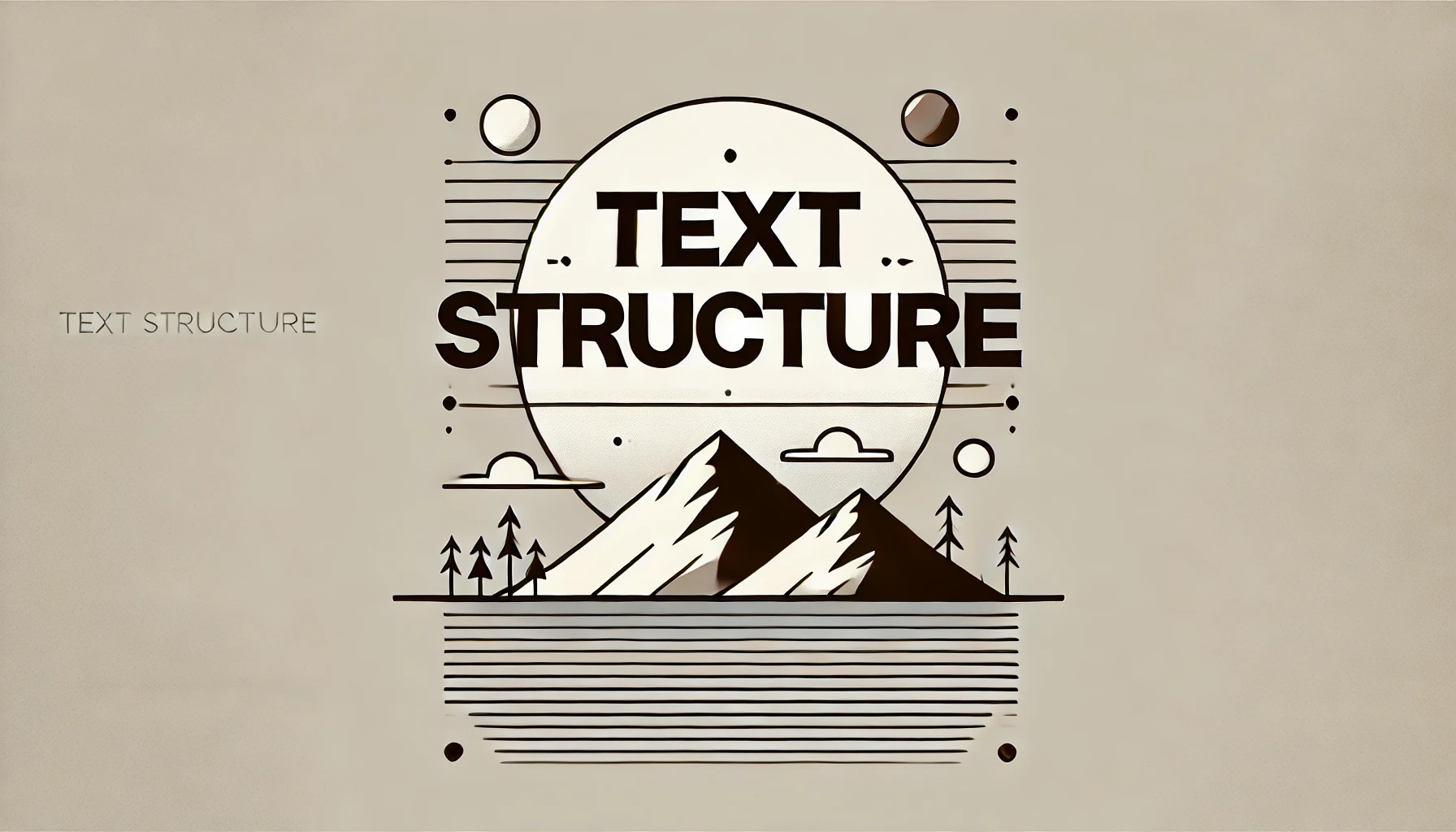What is text structure, and why does it matter in writing? Have you ever wondered how writers manage to organize their thoughts in a way that keeps you engaged and makes their ideas easy to follow? Whether you’re engrossed in a captivating novel, browsing a news article, or trying out a recipe, the way information is presented plays a huge role in your understanding and enjoyment. That’s where the concept of text structure comes into play.
What Is Text Structure?
Text structure is “the framework or pattern a writer uses to organize ideas and information in a written piece.” Think of it as the blueprint that shapes a text, ensuring the content flows logically and effectively. Writers use different structures depending on their goal, whether it’s to inform, persuade, entertain, or explain. Recognizing what is text structure can be a game-changer for both readers and writers, improving comprehension and communication.
Why Is Text Structure Important?
Imagine trying to put together a puzzle without knowing what the final picture looks like. That’s what reading without recognizing text structure can feel like. Knowing the structure helps readers follow along more easily, identify the main points, and retain information better. For writers, it provides a roadmap to communicate ideas clearly and effectively.
Here are some key reasons why text structure matters:
- Improves Reading Comprehension: Readers can better understand and follow the writer’s ideas.
- Enhances Retention: Organized information is easier to remember and recall.
- Guides Writers: It provides a framework for presenting ideas logically and cohesively.
- Increases Engagement: A well-structured text keeps readers interested and focused.
- Simplifies Complex Information: Helps break down complicated ideas into manageable parts.
Types of Text Structures
There are several common types of text structures, each serving a specific purpose. Writers use these methods to organize their ideas clearly and effectively. Understanding what is text structure helps readers follow the content and writers present their messages in a logical way. Let’s break them down.
1. Description
In a description text structure, the writer explains what something looks, feels, sounds, or smells like. It gives details to help the reader picture it in their mind.
Example of Description
A travel blog talking about a sunset: “The sky turned orange and pink as the sun dipped into the ocean.”
Explanation:
This example helps the reader imagine the colors and beauty of the sunset by giving details about how it looks.
2. Sequence or Chronological Order
This structure tells events or steps in the order they happen, like a timeline or a list of instructions.
Example of Sequence
A recipe: “First, mix the ingredients. Then, bake the cake for 30 minutes.”
Explanation:
The steps are listed in order so the reader knows exactly what to do first, second, and so on. It’s easy to follow when things are written step by step.
3. Cause and Effect
This structure explains why something happened (cause) and what happened because of it (effect).
Example of Cause and Effect
“Because it rained all night, the streets were flooded in the morning.”
Explanation:
The example shows that the rain (cause) made the streets flood (effect). It connects the event with the result so the reader understands how one led to the other.
4. Compare and Contrast
This structure shows how two or more things are alike and different.
Example of Compare and Contrast
“Cats are independent, but dogs need more attention.”
Explanation:
The example compares cats and dogs, showing one way they are different. It helps the reader see the traits of each side-by-side.
5. Problem and Solution
This structure talks about a problem and then explains how it can be fixed.
Example of Problem and Solution
“Littering is a problem, but placing more trash bins around the city can help.”
Explanation:
The example shows the issue (littering) and a possible way to solve it (more trash bins). It gives both the problem and an idea to fix it.
How to Identify Text Structure While Reading
Sometimes, figuring out what is text structure can feel tricky, but there are clues that make it easier to spot. Writers often use specific signal words or phrases that hint at the structure they are using. Paying attention to these words can help you determine the type of text structure and follow the flow of ideas more easily.
Here are some common signal words for different text structures:
- Cause and Effect: because, as a result, due to, therefore
- Sequence: first, next, then, finally, after that
- Compare and Contrast: similarly, however, on the other hand, in contrast
- Problem and Solution: challenge, issue, resolve, solution, fix
These signal words act like signposts, guiding you through the text and helping you understand how the ideas connect. It’s like having a map to navigate the content and make sense of the writer’s message.
Benefits of Recognizing Text Structure
Being able to identify what is text structure isn’t just useful for reading; it’s a skill that can improve your understanding and communication in everyday life. Here’s why it matters:
- Improved Comprehension: Recognizing the structure makes it easier to follow the writer’s ideas and understand their purpose. You’ll grasp the main message without getting lost in the details.
- Better Retention: When information is well-organized, it’s easier to remember. Recognizing text structure helps you break down complex ideas into smaller, manageable parts.
- Enhanced Writing: Understanding text structure is also a powerful tool for writers. By knowing how to structure your own ideas, you can communicate clearly and effectively with your audience.
Whether you’re reading a book, writing an essay, or giving a presentation, knowing what is text structure can make a big difference. It helps you process information faster, retain it longer, and express your own thoughts with clarity.

Practical Tips for Writers
Organizing your text thoughtfully is just as important as the content itself. A well-structured piece not only helps readers but also ensures your message comes across clearly. Here are some practical tips for writers:
- Choose the Right Structure: Think about your purpose and match the structure to it. For instance, use cause-and-effect for essays explaining reasons and results, or sequence for how-to guides and instructions.
- Use Headings and Subheadings: Break your content into smaller, readable chunks by adding clear headings. This helps readers navigate your text easily.
- Incorporate Signal Words: Words like “because,” “first,” or “on the other hand” guide readers and make your content easier to follow.
- Keep It Logical: Ensure each idea connects naturally to the next so your writing flows smoothly from one point to another.
Common Mistakes to Avoid
Even experienced writers can face challenges with text structure. Avoiding these common mistakes will help improve the clarity and effectiveness of your writing:
- Overloading Information: Don’t cram too many details into one section. Break it up to make it digestible for your readers.
- Ignoring Audience Needs: Always consider your readers’ expectations and tailor your structure to suit them. A how-to guide, for example, should be step-by-step, while a persuasive essay needs a strong problem-solution approach.
- Lack of Transition Words: Without transitions, your text can feel disjointed and hard to follow. Use phrases like “next,” “as a result,” or “in contrast” to keep your ideas connected.
By following these tips and avoiding common pitfalls, you can ensure your writing is clear, organized, and engaging for any audience.
Final Thoughts on What Is Text Structure
So, what is text structure? It’s a tool that shapes how we communicate and connect through words. Whether you’re reading a novel, writing an essay, or drafting an email, recognizing and using the right text structure can make all the difference. Next time you pick up a book or start writing, pay attention to the structure—it’s the secret sauce of effective communication.




